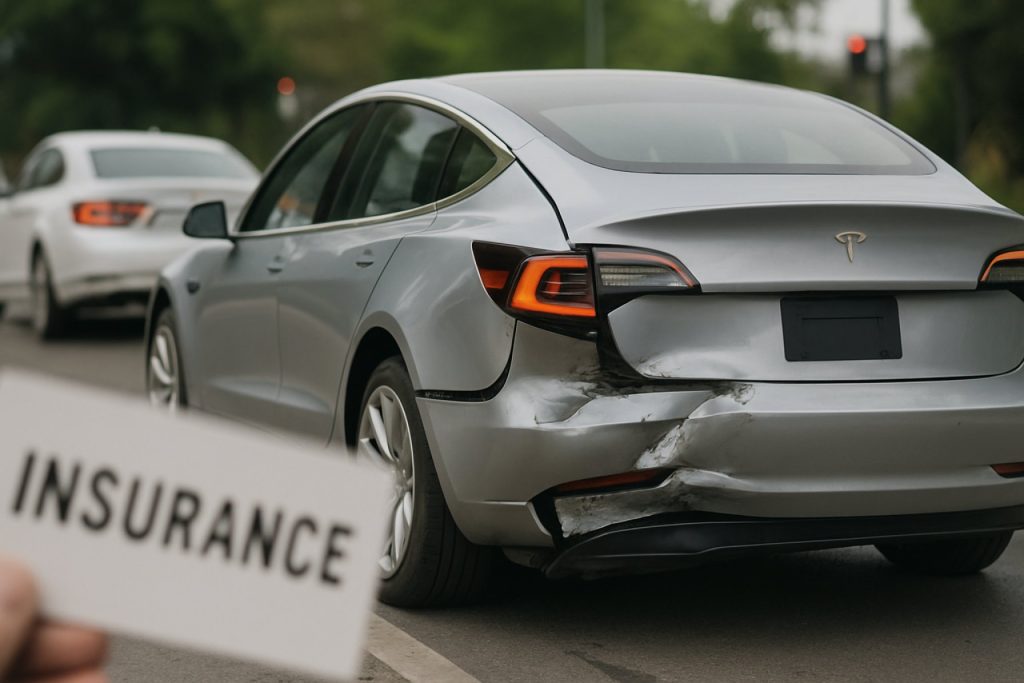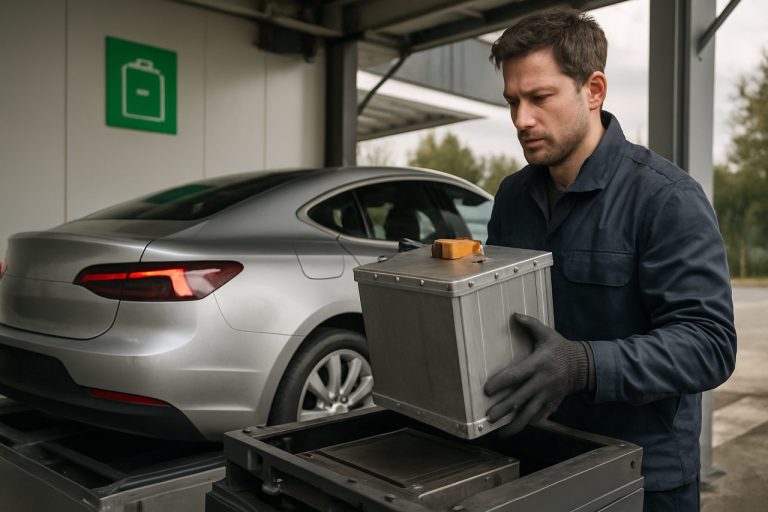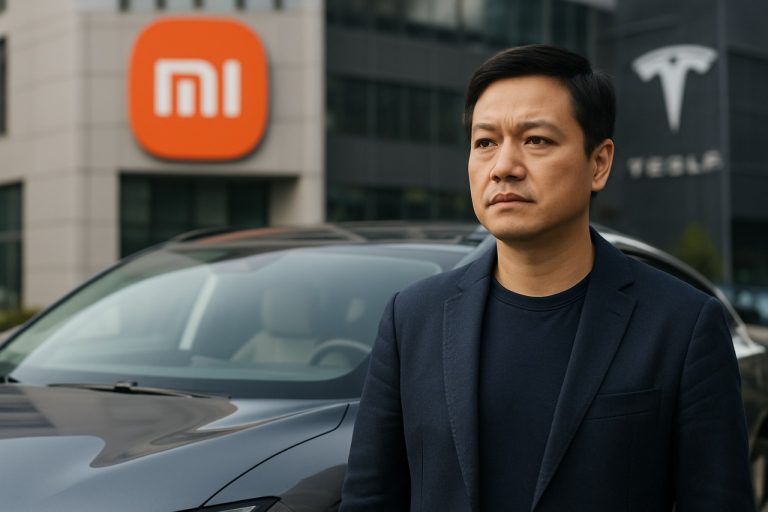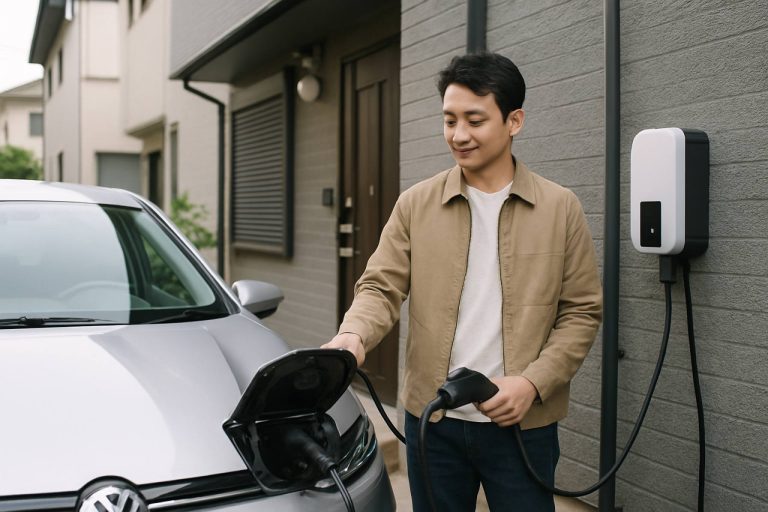
- Tesla introduced its own insurance program, using real-time vehicle data and advanced driver assistance systems (ADAS) to offer customized policies.
- Despite promises of lower premiums, Tesla Insurance reported a high 92.5% loss ratio in 2023, indicating nearly all premium revenue was spent on claims.
- High insurance costs are driven by Tesla’s unique technology, expensive repairs requiring specialized training, and limited repair infrastructure.
- Industry-wide, insuring electric vehicles (EVs) remains costly due to complex electronics and advanced software, even as EVs reduce some mechanical risks.
- Premiums for Tesla drivers remain elevated, and the evolving EV insurance landscape highlights the challenges of adapting pricing models to new technology.
Red paint glimmers under the California sun as a lineup of silent, electric Teslas wait for their turn at the collision center. These cars, sleek harbingers of the future, have become symbols of innovation and aspiration. Yet, beneath their aerodynamic shells, another, less visible transformation is underway—a struggle over what it truly costs to drive the future.
Tesla, renowned for breaking the mold, dared to disrupt car insurance the way it upended the auto industry. Harnessing torrents of real-time vehicle data, the company launched its own insurance initiatives in select U.S. states, promising precision policies tailored with surgical specificity. The idea was bold: by tapping into each Tesla’s constant stream of innovations—like Autopilot, a dazzling advanced driver assistance system (ADAS)—the company could reward safer drivers and slash insurance costs, all while keeping repairs in-house.
But here’s the unexpected twist: the numbers tell a different story.
New figures reveal that Tesla Insurance hemorrhaged cash in 2023, with a loss ratio—the critical insurance metric—soaring to 92.5 percent. To translate, nearly every dollar Tesla raked in through premiums went right back out the door covering drivers’ claims, leaving little, if anything, for overhead or profit. For an insurance provider, that spells trouble.
Why is insuring a Tesla so expensive? Start with the vehicle itself. Tesla’s electric drivetrains and cutting-edge sensors deliver high performance and advanced safety features, yet repairs often require specialized parts and factory-trained technicians. Even seemingly minor accidents can rack up eye-watering bills. Combined with the still-nascent repair infrastructure, this drives up claims and, by extension, premiums. Despite Tesla’s assertive claims—like lower repair and accident rates—the company’s own insurance data challenges that narrative.
Tesla’s experiment in insurance innovation also illuminates a broader industry trend. With electric vehicles (EVs), insurers are still mapping the unknown. While EVs present fewer mechanical breakdowns, their unique designs, complex electronics, and advanced software mean higher repair costs. As EV adoption grows, insurers and manufacturers alike must adapt pricing models to reflect these realities, often erring on the side of caution.
Tesla’s insurance experiment was a bet on transparency and technology, yet the system remains plagued by the fundamental math of risk. Drivers are left with higher premiums, and Tesla with tough choices: raise prices, restrict coverage, or double down on cost reduction strategies.
The takeaway? As car technology races ahead, the insurance world lags in lockstep, recalibrating to address both the promise—and the pitfalls—of the electric age. For anyone eyeing a Tesla, it’s a reminder: innovation can be exhilarating, but it doesn’t always lower your monthly bill.
For those watching the evolution of electric vehicles, the insurance story is a cautionary subplot. As always, progress delivers both brilliance—and bumps—along the road.
For more on automotive innovation and the future of mobility, visit Tesla or explore industry trends at S&P Global.
Tesla Insurance Exposed: Why Premiums Are Sky High and What Most Owners Don’t Know
Overview: Under the Hood of Tesla Insurance
Tesla made headlines by shaking up the car insurance industry with Tesla Insurance, marketing personalized coverage that promised to match the advancements of their electric vehicles. Leveraging real-time vehicle data and features like Autopilot, Tesla aimed to reward driver safety with lower insurance rates.
However, the latest financials reveal a sobering reality: Tesla Insurance posted a loss ratio of 92.5% in 2023—meaning almost every dollar collected in premiums was paid out in claims, leaving virtually no room for profit.
Let’s explore what other industry insiders, experts, and data sources illuminate about insuring Teslas and electric vehicles (EVs)—facts largely missing from popular coverage, and what it means for drivers and the broader EV insurance market.
Untold Facts About Tesla Insurance & EVs
1. EVs and Accident Severity:
While Teslas are loaded with advanced safety features, their repair costs after an accident are, on average, higher than those for traditional gas vehicles. According to the Insurance Institute for Highway Safety (IIHS) and a 2023 CCC Intelligent Solutions report, average repair costs for EVs were 25-30% higher than for internal combustion engine vehicles due to expensive sensors, batteries, and aluminum body panels.
2. Battery Replacement Costs Are a Major Factor:
Unlike conventional cars, seemingly minor collisions can prompt EV insurers to write off the vehicle if battery packs are impacted. Tesla battery replacements can range from $10,000 to $25,000 for out-of-warranty vehicles, a major risk for insurance providers ([source](https://www.consumerreports.org/)).
3. “Total Loss” Threshold is Lower for EVs:
Because of battery costs, EVs are declared “totaled” more frequently than gas cars. In a 2023 Swiss Re study, EVs were found 10-15% more likely to be written off after a moderate accident.
4. Limited Repair Networks Create Bottlenecks:
Tesla’s certified repair centers are fewer than those for legacy automakers. According to Reuters, customers sometimes wait weeks for repairs, driving up the cost of rental car coverage and claim durations.
5. Real-World Use Case:
Tesla Insurance is only available in a select number of U.S. states (CA, TX, IL, OH, and a few others). This means most Tesla drivers still rely on traditional insurance plans, which often charge premiums 20-40% higher than for comparable luxury sedans.
6. Over-the-Air Updates Can Affect Insurance Risk:
While Tesla’s over-the-air software updates can improve safety instantly, they can also cause insurance pricing volatility, as risk profiles can shift without traditional actuarial review ([Forbes](https://www.forbes.com/)).
7. Market Forecast:
S&P Global Mobility forecasts that by 2030, EVs could make up more than 25% of new vehicle sales in developed markets, which means the insurance industry must adapt rapidly.
Pressing Questions Answered
– Why is Tesla insurance so expensive?
– Parts, battery complexity, and limited repair centers lead to higher costs—often outweighing safety tech savings.
– Can you reduce your Tesla insurance premium?
– Yes. Maintain a safe driving score, limit annual mileage, install dashcams, bundle policies, and shop around with both Tesla and major insurers.
– Does Tesla’s own insurance offer better claims service?
– Mixed reviews exist; some report quick, seamless digital experiences, while others cite lengthy repair times and parts delays.
– Is Tesla Insurance cheaper than conventional insurance?
– In some states, Tesla undercuts competitors, but not always—local rates and driving profiles vary widely.
Pros & Cons Overview
Pros:
– Usage-based pricing can reward safe habits
– Direct integration with vehicle data
– Streamlined digital claims process via Tesla app
Cons:
– Limited availability (few states)
– High repair costs often negate premium discounts
– Service delays due to limited certified shops
– Financial stability questioned after high 2023 loss ratio
Tutorial: How to Get the Best Tesla Insurance Rate
1. Use Tesla’s in-car Safety Score tool to monitor your real-time insurance risk.
2. Compare Tesla Insurance quotes with other providers like Allstate, Progressive, and Geico.
3. Ask about discounts for advanced driver-assistance features (Autopilot, Full Self Driving).
4. Consider raising your deductible to lower monthly rates, but balance with out-of-pocket risk.
5. Ensure access to a certified Tesla repair center in your area before choosing coverage.
6. Reduce annual mileage or enroll in telematics programs for usage-based policies.
Industry Trends & Market Insights
– As EV popularity grows, insurance companies are ramping up partnerships with automakers for better access to repair data and predictive analytics.
– New insurtech firms such as Root and Clearcover are leveraging AI and telematics, challenging traditional insurance pricing models.
– The industry is debating whether EVs justify lower premiums due to fewer moving parts, versus higher costs due to batteries and advanced tech.
Controversies & Limitations
– Some consumer advocates claim Tesla’s driver data collection raises privacy concerns.
– There has been criticism over the lack of transparency in how Tesla calculates individual rates.
– High loss ratios put financial sustainability in question unless Tesla can cut repair costs or raise premiums significantly.
Security, Sustainability, and Compatibility
– Security: Most Tesla Insurance policies are underwritten by established insurers, providing regulatory oversight.
– Sustainability: While EVs reduce emissions, high total-loss rates raise end-of-life recycling concerns.
– Compatibility: Tesla Insurance may not integrate with all models and is not available for vehicles used for rideshare/commercial use.
Expert Insights & Predictions
Industry analysts predict that Tesla will have to either raise rates, limit risk exposure (e.g., reduce coverage or exclude certain high-cost repairs), or push for cheaper, modular battery repairs to reach insurance profitability by 2026. Expect more usage-based insurance models as automakers leverage data for pricing—but premium relief may remain elusive.
Quick Tips to Lower Your Tesla Insurance Bill Now
– Maintain a clean driving record and use Tesla’s Safety Score feedback.
– Compare at least three insurance quotes each renewal cycle.
– Ask your insurer about EV-specific discounts.
– Consider telematics or mileage-based policies.
– Promptly repair minor issues to avoid larger claims.
Related Links
Explore more about Tesla vehicles and insurance at the official Tesla site or access global industry analysis through S&P Global
Conclusion
Tesla’s attempt at reinventing auto insurance exposes the turbulence of transitioning to electric mobility—from higher repair costs to new risk models. As EVs go mainstream, insurance innovation remains a work-in-progress, offering both promise and persistent stumbling blocks. For now, Tesla owners should be proactive, educated—and ready for some sticker shock until the industry catches up.



